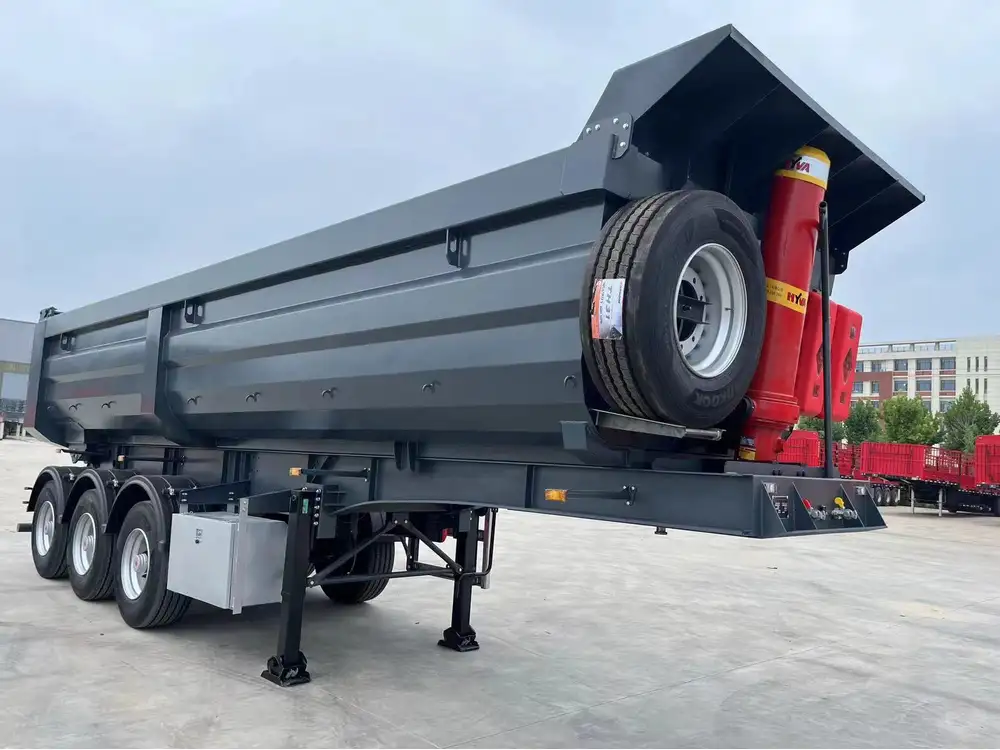Introduction to Van Semi Trailers
Van semi trailers, also known as box trailers, are a critical component in the transportation industry. They provide vast capacity for goods, ensuring safe transit from one location to another. However, unique scenarios may arise that beg the question: Can you take the roof off a van semi trailer? This article delves into that inquiry while exploring the implications, benefits, challenges, and potential outcomes of altering a van semi trailer’s structure.
Understanding the Structure of Van Semi Trailers

Key Components of a Van Semi Trailer
- Chassis: The fundamental frame providing structural integrity, designed for weight distribution.
- Body: The enclosed space where goods are stored, usually crafted from aluminum or composite materials for durability.
- Roof: An integral part of the body, providing essential protection against environmental factors.
- Floor: The platform that supports cargo, often constructed from plywood or metal.
Roof Functionality
The roof is not merely an overhead cover; it plays several essential roles:
- Protection: Shields cargo from rain, snow, and UV rays.
- Aerodynamics: An optimally designed roof enhances fuel efficiency by reducing drag during transit.
- Structural Integrity: It contributes to the overall stability of the trailer.
Addressing the Query: Can You Take the Roof Off?

Legal and Safety Considerations
Before even contemplating the removal of a roof, it’s crucial to understand the legal implications and safety protocols involved:
- Regulations: Local or federal transport regulations may stipulate standards for trailer construction. Removing the roof could violate these codes.
- Weight Distribution: Removing the roof can significantly alter weight distribution, potentially leading to instability during transit.
Evaluation of Structural Integrity
Removing a roof can compromise the structural soundness of a van semi trailer. Key aspects to consider include:
- Reinforcement Needs: If the roof is to be removed, additional reinforcements may be required to maintain stability.
- Welding and Reinforcement Techniques: Employing proper welding and reinforcement techniques is critical. Techniques may include adding cross members or utilizing stronger materials to support the trailer.
| Factor | Description |
|---|---|
| Weight Changes | Alterations can impact overall weight, resulting in need for recalibration. |
| Ventilation | Consider how removal aids or hinders airflow in enclosed spaces. |
| Weather Protection | Evaluate the risk of cargo damage from elements. |
| Access to Cargo | Will it enhance or complicate access to goods? |
Advantages of Removing the Roof

Improved Accessibility
A critical argument in favor of roofing removal is accessibility. Transporting taller items becomes a more feasible endeavor when the roof is absent. Consider the following scenarios:
- Loading Oversized Cargo: Items that exceed standard height restrictions can be accommodated, broadening the scope of potential freight.
- Efficient Loading and Unloading: Removing barriers can streamline operations, reducing time and labor costs.
Enhanced Ventilation
Certain industries, particularly those involving perishables, may benefit from improved air circulation:
- Temperature Control: Facilitates better temperature management of sensitive cargo.
- Odor Control: Minimizes odor retention, essential for transporting food products or chemicals.
Disadvantages and Challenges
While removing the roof can provide advantages, there are significant risks and challenges to address:

Exposure to Elements
Without a roof, cargo is fully exposed to the elements:
- Weather Risks: Rain, snow, or extreme heat can jeopardize cargo integrity.
- Security Concerns: Increased vulnerability to theft or damage can arise.
Potential Structural Complications
- Weakening of Trailer Frame: Roof removal can lead to unforeseen complications in structural integrity.
- Increased Maintenance Needs: Enhanced wear and tear may necessitate more frequent repairs or upgrades.
| Challenge | Impact |
|---|---|
| Weather Exposure | Risks cargo damage, increases liability. |
| Legal Compliance | Potential violations of transport regulations. |
| Increased Maintenance Costs | Higher odds of requiring repairs and reinforcements. |
Alternatives to Complete Roof Removal
For those seeking enhanced functionality without the downsides of total removal, consider these alternatives:

Installation of Ventilation Systems
Instead of removing the entire roof, installing sophisticated ventilation systems can provide essential cooling and humidity control. Options include:
- Vents: Install airflow vents to maintain air circulation.
- Fans: Energy-efficient fans can push warm air out while inviting cooler air in.
Modify Roof Design
A partial roof modification could work as a satisfactory compromise. Techniques to explore might include:
- Pop-Up Roofs: Create adjustable designs that allow for height expansion.
- Removable Panels: Implement removable sections for occasional oversized cargo transport.
Loads with Adaptable Height
Investing in adjustable height equipment for critical loads might also mitigate the need for roof modifications, offering a removable framework for items exceeding standard height during transport.

Conclusion
The inquiry into whether one can take the roof off a van semi trailer presents a multifaceted discussion that involves critical assessments of legality, safety, design, and practicality. There are clear benefits, but also significant challenges to navigate. As a manufacturer of semi trailers, understanding these elements is crucial not just to enhance your offerings but also to ensure that your clients are equipped with all the necessary information when making modifications to their trailers.
In summary, if one is considering roof modifications, it’s imperative to weigh all factors judiciously, retaining the structural integrity of the van semi trailer as the foremost priority. Balancing functionality against legalities and safety is essential in decision-making. Each choice should aim at improving operational efficiency while safeguarding cargo and adhering to regulations, thus ensuring seamless transit experiences for all stakeholders involved.



